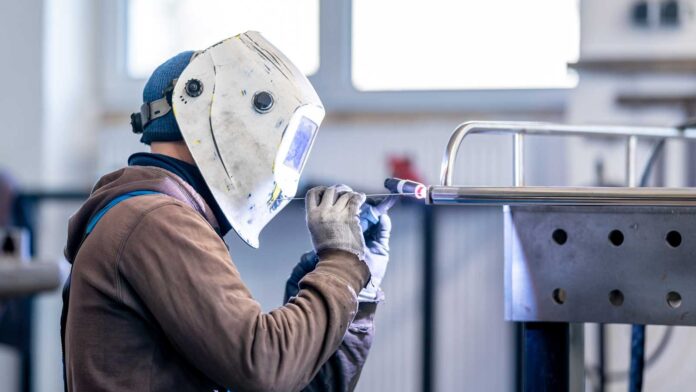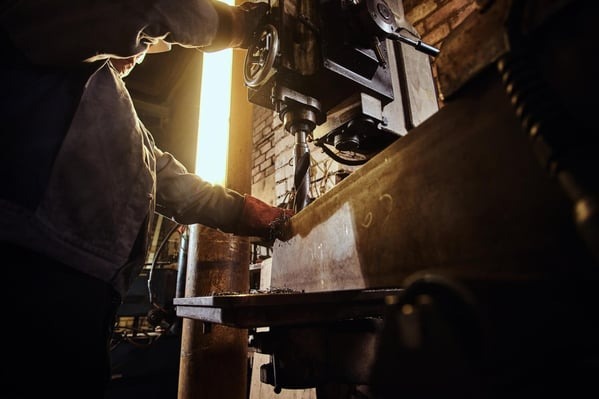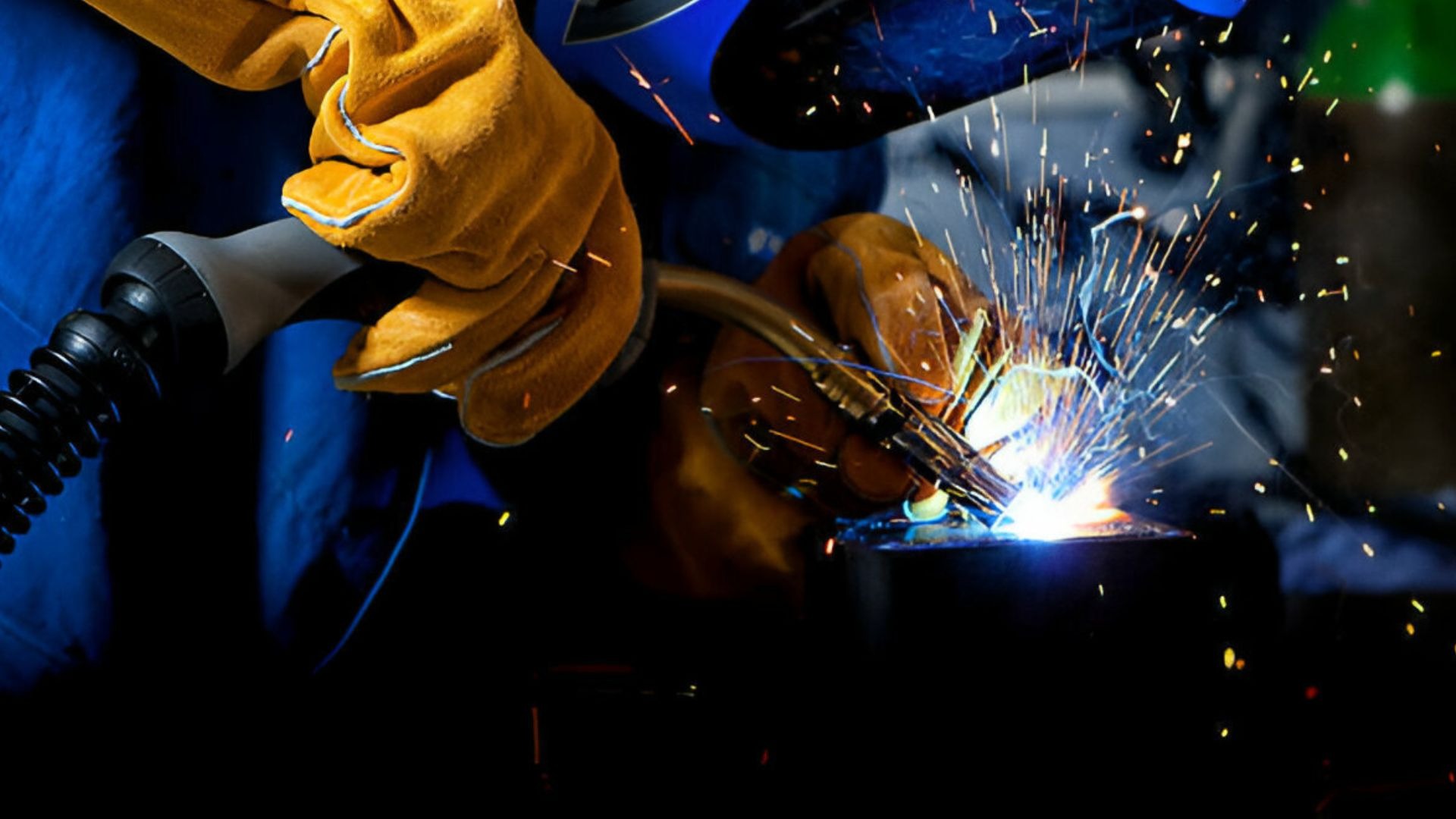When it comes to creating complex and durable metal products, businesses often face the decision of choosing the right method for their needs.
Two common approaches to metalworking are heavy metal fabrication and traditional metalworking. While they may seem similar, these processes differ significantly in terms of techniques, applications, and outcomes.
At Boardman Inc., a leading provider of heavy metal fabrication services, we understand how important it is to choose the right metalworking method for your project.
In this blog post, we’ll break down the key differences between heavy metal fabrication and traditional metalworking to help you understand which method is best suited for your specific needs.
🏗️ What Is Heavy Metal Fabrication?

Heavy metal fabrication is a specialized process used for creating large, complex, and often heavy-duty metal structures.
The process involves several steps, including cutting, bending, welding, assembling, and finishing metal materials to create custom products.
It is typically used in industries that require durable and strong components, such as construction, automotive, aerospace, energy, and manufacturing.
In heavy metal fabrication, the materials used—such as steel, aluminum, or other strong metals—are often thick and heavy.
Fabricators use advanced equipment like CNC machines, laser cutters, plasma cutters, and robotic welding systems to create precise and durable components.
The scale of projects handled by heavy metal fabrication companies is often much larger than those tackled by traditional metalworking methods.
🔨 What Is Traditional Metalworking?
Traditional metalworking, on the other hand, refers to the more conventional methods of working with metals, often involving hand tools, simpler machinery, and smaller-scale projects.
Traditional methods include processes like forging, casting, machining, and manual welding. These techniques have been used for centuries and are ideal for producing small to medium-sized components, typically requiring less complex or specialized design.
While traditional metalworking is still widely used for certain projects, it does not usually handle the volume, size, or complexity of work seen in heavy metal fabrication.
Traditional metalworking also tends to focus on more straightforward, less customized products—such as basic metal parts, hardware, or structural elements.
⚙️ Key Differences Between Heavy Metal Fabrication and Traditional Metalworking

1. Scale and Complexity
One of the primary differences between heavy metal fabrication and traditional metalworking is the scale and complexity of the projects.
Heavy metal fabrication is often used for large, complex metal structures that require high levels of precision and strength. These projects are typically much larger and more intricate than those handled by traditional metalworking methods.
For example, heavy metal fabrication is used for building steel frames for commercial buildings, bridges, and machinery, while traditional metalworking might be used to create smaller parts like fasteners, brackets, or tools.
2. Equipment and Technology
Heavy metal fabrication relies on advanced technology and equipment, such as CNC machines, laser cutting, plasma cutting, and robotic welding.
These tools enable fabricators to create highly precise and complex components with minimal error.
In contrast, traditional metalworking often uses manual tools, such as hammers, anvils, and lathes, and may not achieve the same level of precision or speed.
The use of automation and computer-aided design (CAD) in heavy metal fabrication allows for the creation of custom designs that are difficult or impossible to achieve using traditional methods.
3. Materials
In heavy metal fabrication, the materials used are typically heavy-duty metals like steel, aluminum, or titanium, which are capable of withstanding high stresses, heavy loads, and extreme environmental conditions.
These materials are often thicker and require more force to manipulate. Traditional metalworking, on the other hand, may work with lighter materials like brass or copper, which are easier to shape and cut.
Heavy metal fabrication often focuses on industries where high strength and durability are necessary, while traditional metalworking may be used for applications where the material is less critical or the components are smaller and lighter.
4. Precision and Tolerance

Heavy metal fabrication is designed to meet exact specifications with high precision. Fabricators work with tight tolerances and ensure that each part fits perfectly into the larger structure.
The level of precision achieved in heavy metal fabrication is often unmatched by traditional metalworking methods, especially in complex projects that require custom-fit components.
Traditional metalworking methods, while still precise, often lack the ability to create components with the same level of accuracy as those produced in heavy metal fabrication.
5. Applications and Industries
Heavy metal fabrication is widely used in industries like construction, automotive, aerospace, energy, and manufacturing.
It is essential for building large-scale infrastructure projects, such as bridges, high-rise buildings, and industrial machinery.
In contrast, traditional metalworking is used in industries that require smaller or more standardized parts, such as tool making, hardware production, and small machinery manufacturing.
Both approaches contribute to different stages of the production chain, often working alongside other specialized metal-forming processes. Within these sectors, Metal stamping experts also play a crucial role by producing high-precision components at scale, supporting everything from automotive assemblies to complex industrial systems.
🛠️ Which Method Is Right for Your Project?
Choosing between heavy metal fabrication and traditional metalworking depends on the size, complexity, and requirements of your project.
If you’re working on a large-scale industrial project, such as building a steel framework for a commercial building or creating custom components for manufacturing equipment, heavy metal fabrication is the way to go.
Its advanced equipment, large-scale capabilities, and high precision ensure that you get durable, high-quality results.
On the other hand, if you need smaller, less complex components, or if you’re working with lighter materials, traditional metalworking may be more cost-effective and suitable for your needs.
✅ Boardman Inc.: Your Heavy Metal Fabrication Partner
At Boardman Inc., we specialize in heavy metal fabrication for a variety of industries.
With state-of-the-art equipment and highly skilled technicians, we’re equipped to handle everything from large-scale infrastructure projects to complex custom components.
Whether you need steel frames for a construction project or specialized machinery parts, we’ve got you covered.
Contact us today to learn more about how our heavy metal fabrication services can help bring your project to life with precision and durability.







